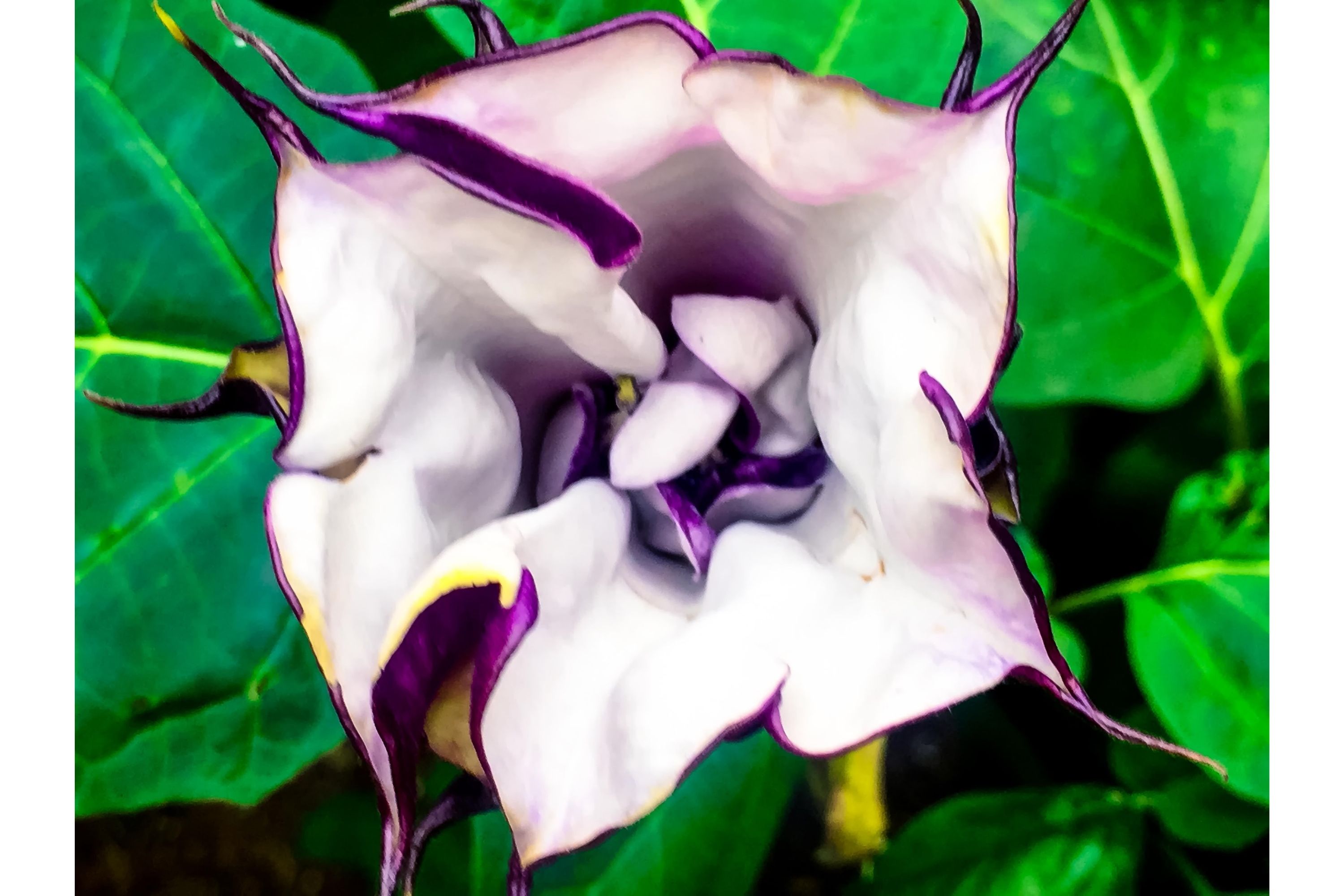Devil's Trumpet
(Datura metel)

Description
Datura metel, also known as Devil's Trumpet, is a highly poisonous plant that belongs to the Solanaceae family. This plant is known for its large trumpet-shaped flowers that bloom at night and its hallucinogenic properties. The plant has been used for medicinal and religious purposes throughout history, but its toxicity has also made it a dangerous plant that requires careful handling. In this article, we will explore the various aspects of Datura metel, including its history, botany, cultivation, and medicinal properties. History: Datura metel is native to Asia and has been used for medicinal and religious purposes for thousands of years. In ancient India, the plant was used in Ayurvedic medicine to treat various ailments, including asthma, coughs, and fevers. The plant was also used in religious ceremonies as an offering to the gods. The plant's use spread to other parts of the world, including Europe and the Americas, where it was used for medicinal and ornamental purposes. Botany: Datura metel is a shrub or small tree that can grow up to 1-2 meters tall. The plant has large, dark green leaves that are deeply lobed and can grow up to 20 cm long. The plant's flowers are its most distinctive feature, with large trumpet-shaped blooms that can grow up to 20 cm long and 10 cm wide. The flowers are typically white or light purple and have a strong, sweet fragrance that attracts moths and other night-flying insects. The plant produces a fruit that is a spiny capsule containing numerous small, black seeds. Cultivation: Datura metel is a hardy plant that can be grown in a variety of conditions. The plant prefers full sun to partial shade and well-drained soil. The plant can be propagated from seeds, which should be sown in the spring or fall. The seeds should be planted about 1 cm deep and spaced about 30 cm apart. The plant can also be propagated from cuttings, which should be taken in the spring or summer. The plant is tolerant of drought and can survive in poor soil conditions, but it is susceptible to frost and should be protected in colder climates. Toxicity: Datura metel is highly toxic and should be handled with care. All parts of the plant contain tropane alkaloids, which can cause hallucinations, delirium, and other dangerous symptoms if ingested. The plant's toxicity has led to its use in traditional medicine, but its use should be avoided due to its potential for harm. The plant should not be consumed or used in any way without the supervision of a qualified healthcare professional. Medicinal Properties: Despite its toxicity, Datura metel has been used for medicinal purposes throughout history. The plant's leaves, seeds, and flowers contain alkaloids that have antispasmodic, anti-inflammatory, and analgesic properties. The plant has been used to treat various conditions, including asthma, coughs, and fevers. The plant has also been used as a sedative and to induce hallucinations. However, its use should be avoided due to the plant's toxicity and potential for harm. Conclusion: Datura metel is a highly poisonous plant that has been used for medicinal and religious purposes throughout history. The plant's distinctive trumpet-shaped flowers and hallucinogenic properties have made it a popular ornamental plant, but its toxicity has also made it a dangerous plant that requires careful handling. While the plant has been used for medicinal purposes, its use should be avoided due to its potential for harm. Anyone who encounters Datura metel should exercise caution and seek professional guidance if they plan to use the plant for any purpose.
Taxonomic tree:







